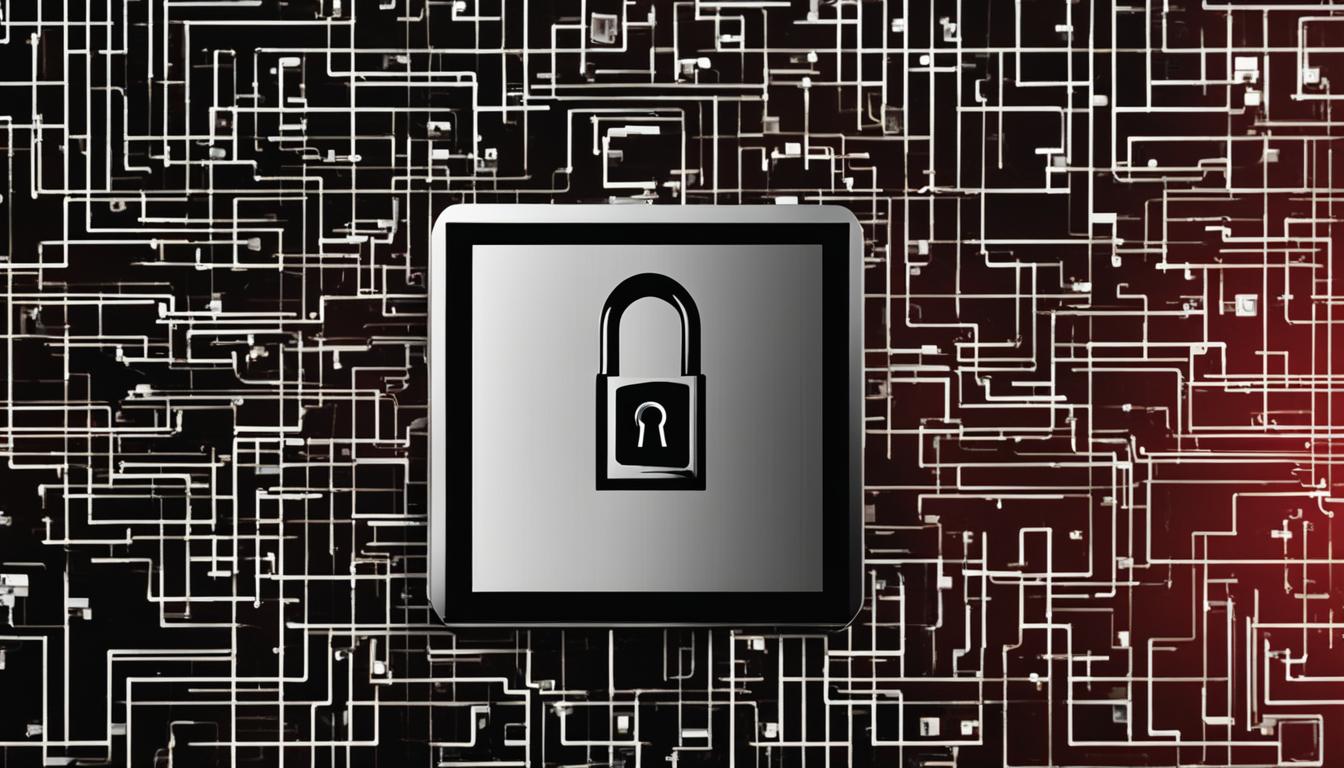Welcome to your information security guide on understanding the SOC (Security Operations Centre) in IT. In today’s digital landscape, ensuring the safety and protection of your organization’s data is of utmost importance. The SOC plays a crucial role in maintaining your cybersecurity posture by tirelessly monitoring and responding to potential threats.
The SOC, also known as a Security Operations Centre, is made up of a team of highly skilled security analysts, engineers, managers, and a Chief Information Security Officer (CISO). Their primary mission is to detect, analyze, and respond to cybersecurity incidents using advanced technology solutions and well-defined procedures.
By utilizing tools such as Intrusion Detection Systems (IDS), Security Information and Event Management (SIEM) software, and firewalls, the SOC identifies and prevents cyber threats from compromising your system’s security. This proactive approach helps to safeguard your organization’s digital assets and maintain a strong defense against potential breaches.
Contents
- 1 What is SOC in Cybersecurity?
- 2 Components of a SOC
- 3 Benefits of a SOC in Cybersecurity
- 4 Choosing the Right SOC for Your Organization
- 5 Conclusion
- 6 FAQ
- 6.1 What does SOC mean in information technology?
- 6.2 What is the meaning of SOC in cybersecurity?
- 6.3 What are the components of a SOC?
- 6.4 What is the role of a SOC in cybersecurity?
- 6.5 What are the benefits of having a SOC in cybersecurity?
- 6.6 What are the challenges of implementing a SOC?
- 6.7 How do I choose the right SOC for my organization?
- 6.8 Why is understanding SOC in information technology important?
- 7 Source Links
Key Takeaways:
- The SOC is a central hub of a high-skilled security team that continuously monitors and improves an organization’s cybersecurity posture.
- It utilizes tools such as Intrusion Detection Systems (IDS), Security Information and Event Management (SIEM) software, and firewalls to detect and prevent cyber threats.
- The SOC comprises security analysts, engineers, managers, and a Chief Information Security Officer (CISO).
- Its role is to provide continuous surveillance, proactive detection, and response to cybersecurity incidents.
- Hiring a Managed SOC service can help overcome challenges such as skill shortages and budget constraints.
What is SOC in Cybersecurity?
SOC in cybersecurity refers to a Security Operations Centre (SOC) that plays a crucial role in continuously monitoring and improving an organization’s cybersecurity. It focuses on detecting, analyzing, and responding to cybersecurity incidents using a combination of technology solutions and procedures.
The SOC team members include security analysts, engineers, managers, and a Chief Information Security Officer (CISO). They work collaboratively to ensure the safety of the organization’s digital environment.
The SOC utilizes various tools and systems, such as Intrusion Detection Systems (IDS), Security Information and Event Management (SIEM) software, and firewalls. These technology solutions help in identifying and preventing cyber threats, safeguarding the organization’s sensitive data.
Implementing a SOC is essential for organizations in today’s digital landscape. The increasing number of cybersecurity incidents demands a proactive approach to protect sensitive data and maintain business continuity.
SOC’s Role in Cybersecurity Incident Response
When a cybersecurity incident occurs, the SOC team plays a critical role in incident response. They quickly detect the incident, analyze its impact, and take appropriate actions to mitigate the risks.
The SOC’s technology solutions enable real-time monitoring and alarming, allowing the team to respond promptly to security incidents. This helps in minimizing the damage caused by potential cyber threats.
Advantages of Having a SOC in Cybersecurity
Having a SOC brings several benefits to organizations:
- Proactive Threat Detection: SOC’s continuous monitoring and analysis of network traffic and security events help in detecting threats before they cause substantial damage.
- Effective Incident Response: The SOC team’s expertise and well-defined procedures enable a swift and effective response to cybersecurity incidents.
- Reduced Downtime: Timely detection and mitigation of threats minimize the impact on business operations, reducing downtime and associated costs.
- Comprehensive Reports: SOC generates comprehensive reports on security incidents, providing valuable insights and recommendations for improving cybersecurity posture.
- Regulatory Compliance: SOC’s adherence to industry standards and best practices ensures compliance with regulatory requirements, avoiding legal and financial consequences.
Sample Table (Technical Specifications of SOC)
| Component | Description |
|---|---|
| Security Analysts | Monitor network traffic, analyze security events, and respond to incidents in real time. |
| Engineers | Implement and maintain security infrastructure, including firewalls, IDS, and SIEM software. |
| Managers | Oversee the SOC operations, coordinate team activities, and ensure compliance with security policies. |
| Chief Information Security Officer (CISO) | Develop and implement the organization’s cybersecurity strategy, evaluate risks, and define security objectives. |
Components of a SOC
A Security Operations Centre (SOC) is comprised of a diverse team of professionals who work together to ensure the security of an organization’s digital environment. This team includes security analysts, engineers, managers, and a Chief Information Security Officer (CISO). Each member plays a unique role in maintaining the safety of the organization’s information assets and mitigating potential cyber threats.
The SOC team consists of:
- Security analysts: These experts are responsible for monitoring and analyzing security events and incidents. They use their knowledge and experience to identify potential threats and respond effectively.
- Engineers: SOC engineers manage and maintain the infrastructure and tools required for monitoring and detecting cyber threats. They ensure that the systems are up-to-date and functioning optimally.
- Managers: SOC managers oversee the overall operations of the SOC team. They coordinate and direct the activities of the analysts and engineers, ensuring efficient and effective security incident response.
- Chief Information Security Officer (CISO): The CISO is a senior executive who is responsible for the organization’s overall information security strategy. They provide leadership and guidance to the SOC team, ensuring alignment with the organization’s objectives.
Together, these individuals form a cohesive unit that works tirelessly to protect the organization’s digital assets.
The Role of Technology Solutions
The SOC utilizes advanced technology solutions to aid in the identification and prevention of cyber threats. Some of the key tools and systems used by SOC teams include:
- Intrusion Detection Systems (IDS): These systems monitor network traffic and detect unauthorized access attempts and potentially malicious activities.
- Security Information and Event Management (SIEM) software: SIEM software collects and analyzes log data from various security devices and systems, providing real-time insights into security incidents.
- Firewalls: Firewalls act as a barrier between an organization’s internal network and the external world, controlling incoming and outgoing network traffic to prevent unauthorized access.
These technology solutions enhance the SOC’s capabilities in detecting, analyzing, and responding to cybersecurity threats.

By actively monitoring and addressing these threats, a SOC plays a crucial role in preventing cybersecurity incidents and minimizing the impact on an organization. Whether it’s detecting and thwarting malware attacks or identifying and neutralizing insider threats, the SOC’s continuous surveillance helps safeguard sensitive data and preserve the integrity of digital assets.
A well-functioning SOC relies on a layered security approach that combines technology, processes, and people. This integrated approach ensures comprehensive threat prevention and incident response capabilities. Effective utilization of technology solutions, such as intrusion detection systems, advanced threat analytics, and security information and event management (SIEM) software, empowers the SOC team to detect emerging threats and respond swiftly.
The SOC team, consisting of security analysts, engineers, and managers, plays a pivotal role in executing the SOC’s functions. They collaborate closely with the Chief Information Security Officer (CISO) to develop and implement security policies, conduct risk assessments, and stay updated with the evolving cybersecurity landscape.
Proactive threat detection, continuous surveillance, and timely response are the cornerstones of an efficient SOC. By prioritizing threat prevention and swiftly mitigating vulnerabilities, a SOC helps organizations enhance their overall cybersecurity posture and maintain a robust defense against cyber threats.
Benefits of a SOC in Cybersecurity
Having a SOC brings multiple benefits to your organization’s cybersecurity strategy. Here are some key advantages:
- Proactive Threat Detection: With a SOC in place, you can detect and mitigate potential threats before they cause significant damage. This proactive approach ensures that your systems are continuously monitored, reducing the risk of cyber attacks.
- Reduced Downtime: Swift action taken by the SOC team minimizes the potential downtime that can be caused by cyber attacks. By swiftly responding and resolving security incidents, your business operations can continue uninterrupted.
- Comprehensive Reports: A SOC provides you with comprehensive reports on security incidents and cyber threats. These reports offer invaluable insights into the nature and severity of attacks, enabling you to enhance your security measures and policies.
- Regulatory Compliance: The SOC plays a crucial role in achieving and maintaining regulatory compliance. By continuously monitoring your systems and promptly addressing security vulnerabilities, you demonstrate your commitment to data protection and compliance with regulatory requirements.
Implementing a SOC not only enhances your organization’s resilience against cyber threats but also instills confidence among your stakeholders.

Choosing the Right SOC for Your Organization
When it comes to selecting the right Security Operations Centre (SOC) for your organization, understanding your specific needs is crucial. Consider factors such as the size, complexity, and vulnerabilities of your IT infrastructure. By evaluating these key elements, you can ensure that the SOC you choose aligns perfectly with your organizational requirements.
One option to consider is whether to manage your SOC in-house or opt for a Managed SOC service. Evaluating the cost-benefit of each approach is essential. Managing a SOC internally requires investing in personnel, technology, and ongoing maintenance. On the other hand, opting for a Managed SOC service provides access to experts, advanced tools, and continuous monitoring without the need for substantial upfront investments.
An effective SOC should align with your organization’s business objectives and risk tolerance. It should have the right blend of technology, skilled professionals, and well-defined processes. By finding the right SOC solution, you can rest assured that your organization’s critical assets are effectively protected against cyber threats.
Conclusion
Understanding the significance of SOC in cybersecurity is crucial for organizations looking to enhance their data protection and ensure compliance with regulatory requirements. The SOC, serving as the first line of defense against cyber threats, provides continuous surveillance and proactive detection, mitigating potential risks.
Implementing a SOC brings numerous benefits, including reduced downtime and comprehensive reports that enable timely response to cybersecurity incidents. Moreover, maintaining regulatory compliance becomes more manageable with the help of a SOC, instilling confidence among stakeholders and ensuring the protection of sensitive data.
While challenges such as skill shortages and budget constraints arise, organizations can overcome these obstacles by leveraging Managed SOC services. These services offer access to the required skills, tools, and expertise without the need for a significant upfront investment.
Choosing the right SOC that aligns with your organization’s needs and risk tolerance is paramount to successful implementation and safeguarding your digital assets. With a well-designed SOC in place, organizations can strengthen their cybersecurity posture, proactively defend against cyber threats, and establish a resilient and compliant IT environment.
FAQ
What does SOC mean in information technology?
SOC stands for Security Operations Center. It is a central hub of a high-skilled security team that continuously monitors and improves an organization’s cybersecurity posture.
What is the meaning of SOC in cybersecurity?
In cybersecurity, SOC refers to a Security Operations Center. It is responsible for detecting, analyzing, and responding to cybersecurity incidents using technology solutions and procedures.
What are the components of a SOC?
The components of a SOC include a team of security analysts, engineers, managers, and a Chief Information Security Officer (CISO). The SOC also utilizes tools like Intrusion Detection Systems (IDS), Security Information and Event Management (SIEM) software, and firewalls.
What is the role of a SOC in cybersecurity?
The primary role of a SOC in cybersecurity is to provide continuous surveillance of an organization’s IT systems, detect and handle potential threats proactively, and prevent cybersecurity incidents.
What are the benefits of having a SOC in cybersecurity?
Having a SOC brings benefits such as proactive threat detection, reduced downtime, comprehensive reports, and improved regulatory compliance.
What are the challenges of implementing a SOC?
Skill shortages, budget constraints, and rapidly evolving cybersecurity technologies are common challenges faced when implementing a SOC.
How do I choose the right SOC for my organization?
To choose the right SOC, you need to understand your specific needs, evaluate the size and complexity of your IT infrastructure, and consider the cost-benefit of managing a SOC in-house versus using a Managed SOC service.
Why is understanding SOC in information technology important?
Understanding SOC in information technology is crucial for organizations looking to enhance their cybersecurity. It serves as the first line of defense against cyber threats and helps safeguard digital assets, protect data, and ensure compliance with regulatory requirements.




